In 2016, I was just tinkering with a small tech project—a way to make those long, clunky WhatsApp groupchat invite links easier to share. Little did I know that a few years later, this simple idea would help communities stay connected during the COVID-19 pandemic 🦠. Curious how it all happened? Read on to discover the journey from a casual experiment to a connector for communities in crisis.
Origin story📜
One day in 2016, while I was casually messing around on my phone, I stumbled upon a new WhatsApp feature that caught my eye. It was the ability to create a shareable link for group chats, something like this: https://chat.whatsapp.com/DxBF3Zo6PXR4HLl69Z0V4jH. Pretty neat, I thought. But there was one issue—the link was ridiculously long and not exactly easy to share on posters or by word of mouth. Plus, it gave no clue about what the group chat was actually about since it was just a random jumble of numbers and letters.
Sure, you could use URL shorteners like bit.ly or tinyURL.com, but they have a bit of a bad rep. Scammers often use those services to obscure the final destination of a link, making people hesitant to click. This got me thinking 🤔 what if there was a URL shortener with a clear and transparent domain name that people could trust?

That’s when the idea for GroupWhatsApp.com was born. With a bit of help from my uncle, I registered the domain name and built the first version of the site. It was a minimalistic website, giving off early 2000s vibes. Looking back, I’m not sure if that old-school design added to the legitimacy of the site, but at the time, I was just stoked to have a working version of my idea.
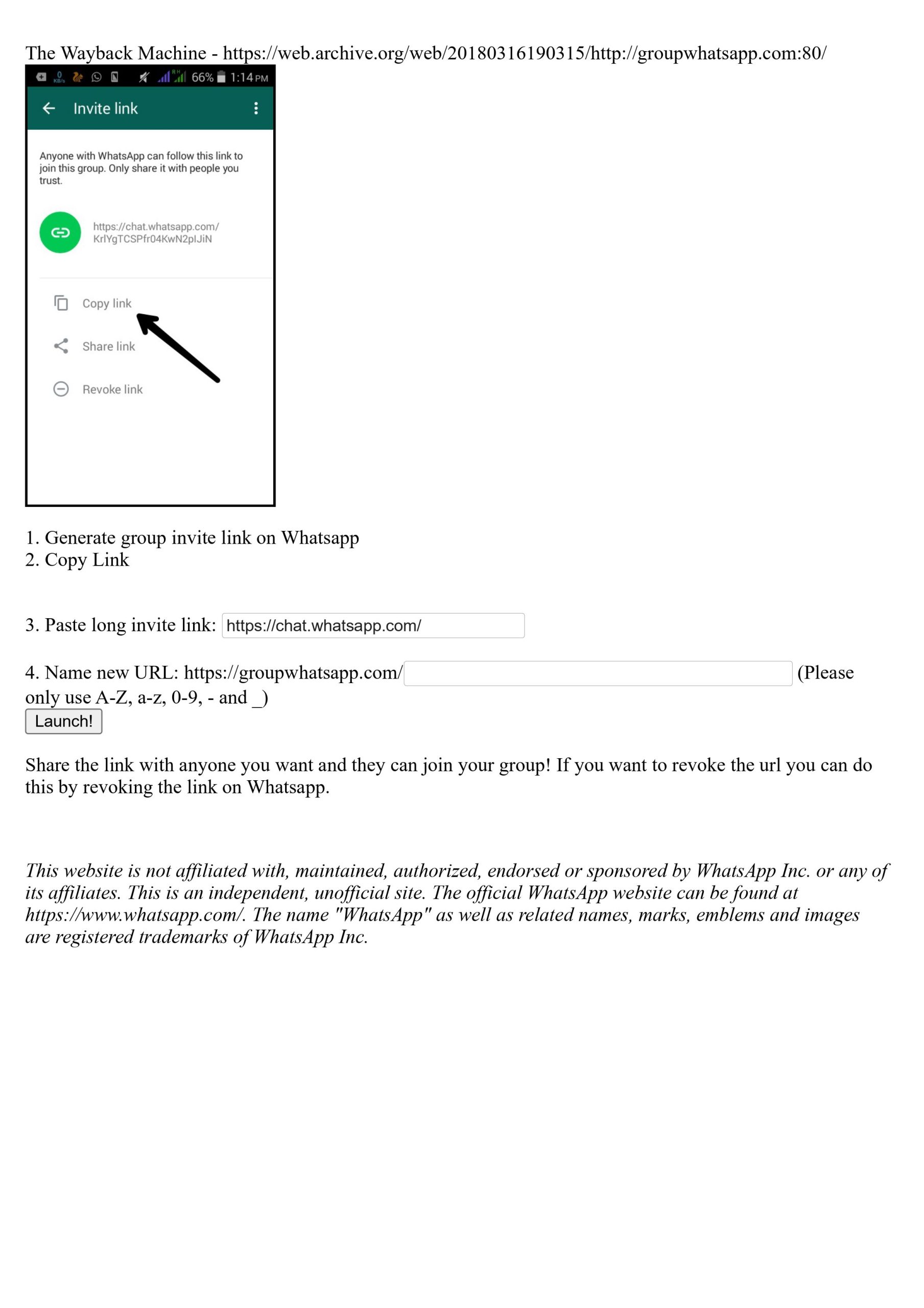
Excited about what I had created, I decided to demo and pitch it at the iBridge Tech Conference in Barcelona in 2016. It was a blast being surrounded by tech entrepreneurs, soaking in their feedback, even if some of it was skeptical. The main point of concern was whether this was a startup idea or just a feature that WhatsApp could easily implement themselves. A valid point, but for the time being, WhatsApp hadn’t done so, and as it turns out, 8 years later, they still haven’t!
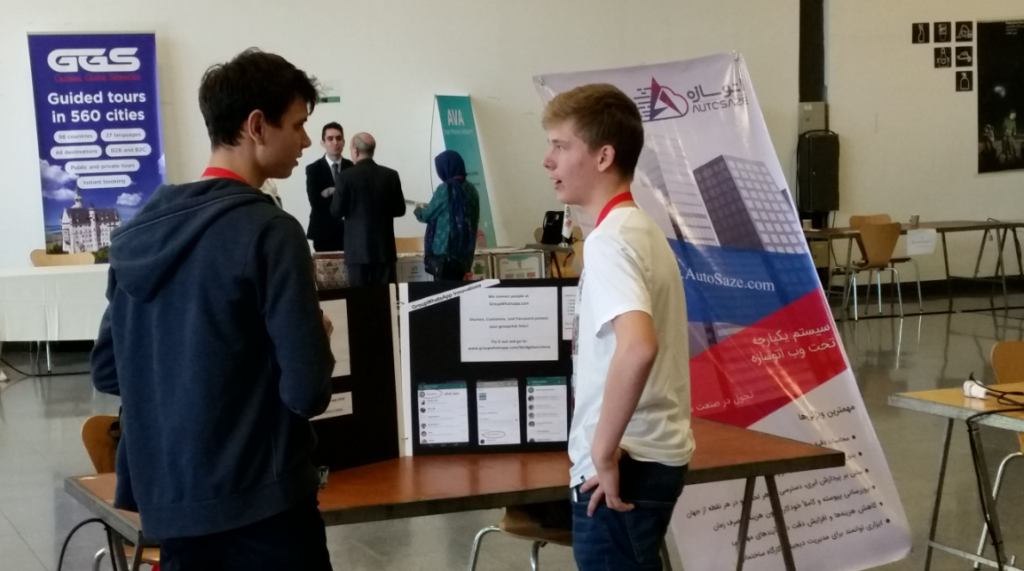
After the conference, life got busy, and the project went dormant for a couple of years 😴.
The Copyright ©️ Notice from WhatsApp™️
Fast forward to July 28, 2017, at 2:13 AM, when I received an email from [email protected]. The subject? “Unauthorized Use of the trademark WhatsApp [Case #443600].” Yeah, that woke me up pretty quickly. The email started with, “It has come to our attention that you have registered groupwhatsapp.com (the ‘Domain Name’). You are currently operating a website (the ‘Website’) at that location and as of the date of this letter, you are using the famous and distinctive WhatsApp trademark in connection with the domain name and website without WhatsApp Inc.’s authorization.”
They threw a lot of legal jargon my way, but the gist was simple: they demanded that I cease and desist from using the WhatsApp trademark and drop the domain name immediately. They gave me ten business days to comply or else face legal action.

Now, I’m not one to back down easily, so my father and I crafted a lengthy response, ending with this gem: “Given the not-for-profit and complementary nature of ‘groupwhatsapp.com,’ I would suggest you discontinue your efforts to have groupwhatsapp.com be ceased. Might you decide otherwise, I would like to request that you provide a better argumentation of why you think that the mere inclusion of the letters ‘WhatsApp’ would constitute an infringement in this particular case while it does not in other cases. Moreover, I would like to ask you to provide me with the contact information of the attorney or legal employee who is attending to this matter so that I can verify the proper affiliation with WhatsApp Inc.”
We hit send and waited. And waited. But guess what? We never heard back from them. Not a peep. So yeah, looks like we stuck it to the man!
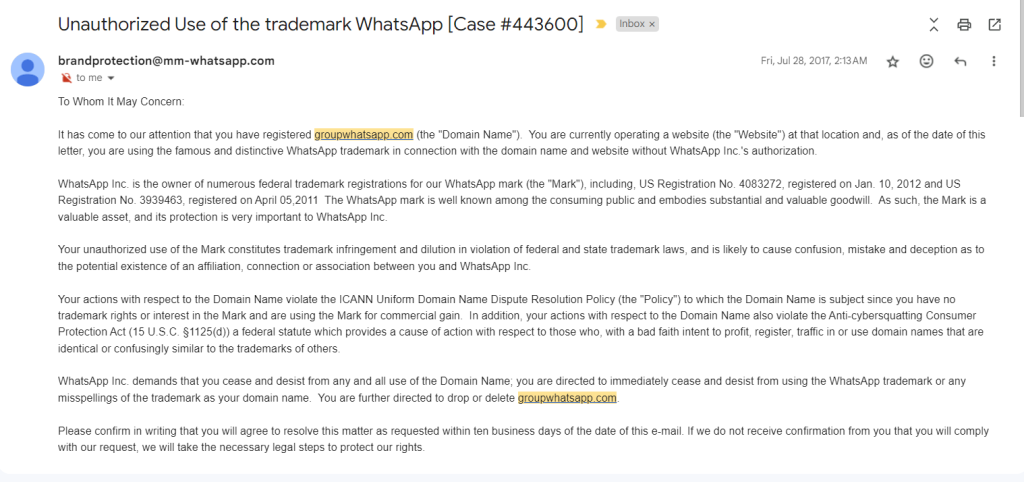
Rebranding and Moving Forward
Despite our small victory, I knew it wasn’t worth the risk of keeping the domain name. The last thing I wanted was to be dragged into a long, costly legal battle. So, I started looking for alternatives. Around that time, I came across a website template specifically for URL shorteners. It had all the features I needed: account creation, link management, password protection for links, and more. It was the perfect opportunity to rebrand the site.
I decided to go with the name JoinGroupChat.com, avoiding any further legal headaches with WhatsApp. I also added a logo and chose the color #b951a0—a vibrant, bold shade of pink-purple. The new site felt fresh, and I was ready to take another swing at making this project a success.
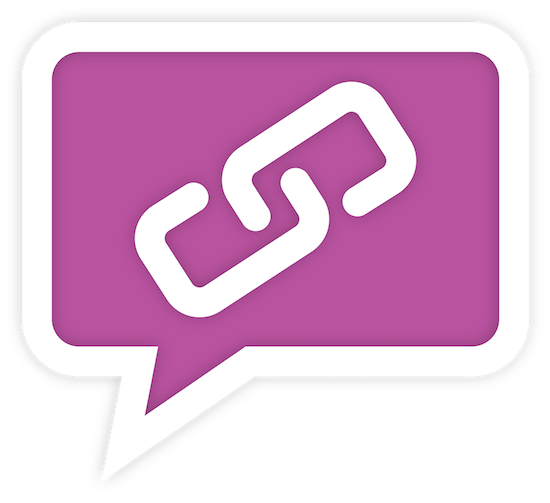
The Startup Weekend Experience
However, by 2019, the project had again been sitting dormant for a while. But like any idea that refuses to die, it was just waiting for the right moment to come back to life. That moment arrived when I decided to participate in a Startup Weekend in Rotterdam. This event was facilitated by some amazing people, including Andres Campo, Pira Seligman, and Cristina Quijano. I figured it was the perfect chance to dust off the project, pitch it again, and see if it had legs.
Startup Weekend is an intense 54-hour event where aspiring entrepreneurs pitch ideas, form teams, and try to validate their concepts in a super-short timeframe. I pitched the idea of JoinGroupChat.com again, and while most people didn’t see much value in it, a Greek guy named Anestis and an Italian named Marco were excited enough about the concept to join my team.
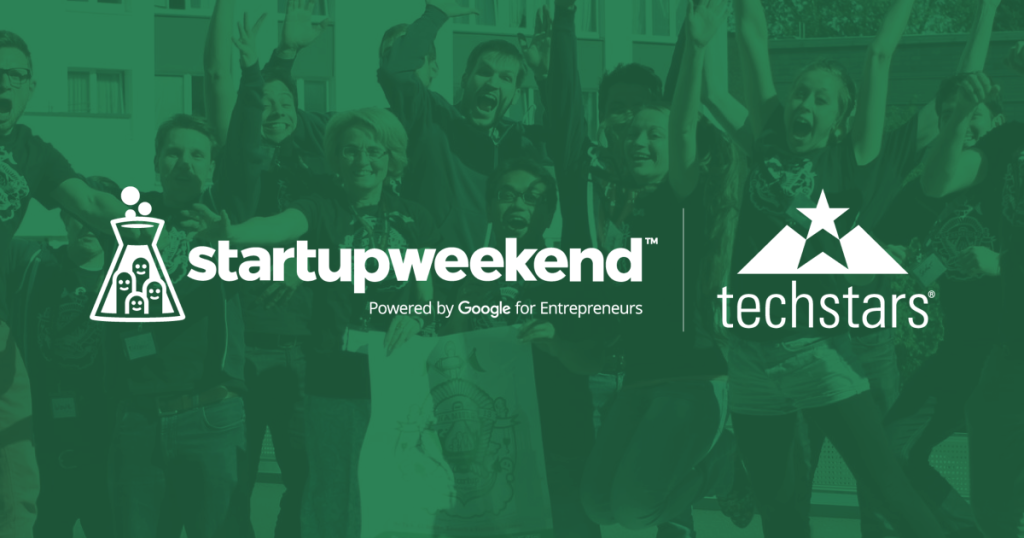
For the next three days, we worked day and night 🌞🌜, trying to figure out whether there was a real need for such a product. Our approach was simple: market research and use case development. In hindsight, I wish we had approached it differently—perhaps by talking to as many people as possible about their WhatsApp and group chat usage to uncover any pain points. This is what’s known as the Lean Startup method: you find a problem to solve first, then build something to solve it, instead of building something and hoping it solves a problem.
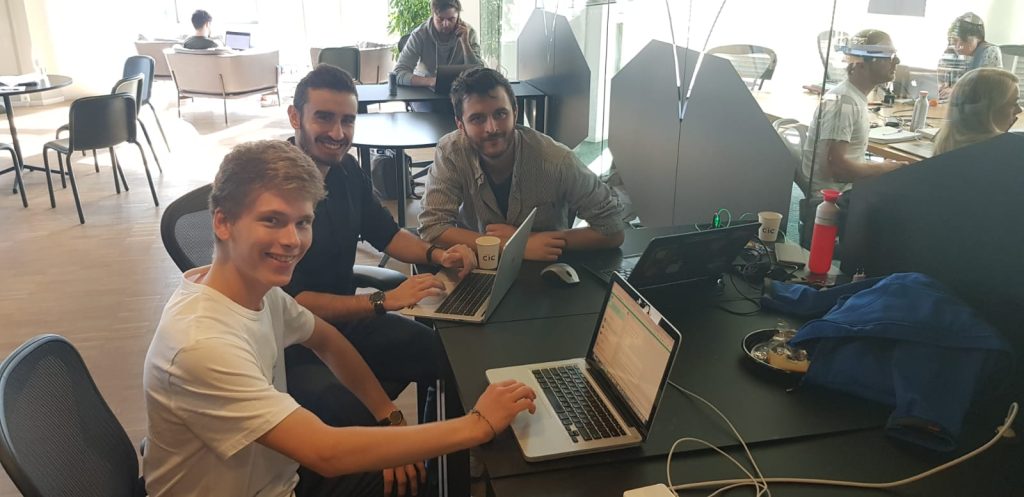
During the event, we decided to create a group chat system for the building where I lived. It was a new building, and there were no existing group chats for residents, so I reached out to the building admin. She agreed to share the main group chat link in a newsletter sent to all residents. From there, we created a group chat for each of the 18 floors in the building, then hung up posters on every floor to spread the word 📢🗣️.

The response was surprisingly positive. Within a week, every floor had active group chats.

At the end of the startup weekend, I pitched our findings and our idea’s for the business model. Although we didn’t win the Startup Weekend, I learned a lot and had a lot of fun. Plus, I made some great connections with people who I remained in touch with long after the event.
Gradual Growth and Mutual Aid
After the Startup Weekend, there was a noticeable but gradual increase in usage of JoinGroupChat.com. By the end of 2019, 25 users had created 262 links, which had been visited 2,734 times. It wasn’t exactly the exponential growth I had hoped for, but it was something.
In 2020, as you may recall, the COVID-19 pandemic struck, and everything changed. One day, I came across a Twitter post by Thomas Stephens, a government worker in Sudbury, a suburb of London, UK. During the pandemic, Thomas had created several WhatsApp groups to connect vulnerable people with volunteers who could help them with tasks like grocery shopping 🛒🤝. These groups are known as mutual aid groups.
Thomas needed a quick and easy way to get people to join these groups. Normally, this would be done by sharing the WhatsApp invite link, but as we know, those links are long and cumbersome to type out, especially if you’re putting them on posters or leaflets. So, Thomas used JoinGroupChat.com to turn those long links into something more manageable, like joingroupchat.com/sudburyaid.


With the help of others, Thomas printed posters and leaflets with the shortened links, and within days, hundreds of people had joined the group using those links 📈. Thomas chose not to use QR codes because not everyone knows how to use them, and according to him, other government workers who used QR codes saw much lower participation rates.
“I remember my time working on this very fondly – your app really helped connect people during the pandemic” – Thomas
Seeing that JoinGroupChat.com was actually useful and making a difference in people’s lives was incredibly energizing. It also got me thinking 🤔, if people were using the site to share long WhatsApp links, they might also find it useful for shortening and customizing other types of links, like those for Zoom meetings or shared documents.
Fueled by this new wave of motivation, I went on a bit of a domain-buying spree. I registered meetingURL.com, groupchatURL.com, documentURL.com, and a bunch of others. Eventually, I decided to make shareableURL.com the main domain name and brand for the website.
Lessons Learned and Moving Forward
The Startup Weekend and the subsequent mutual aid experience taught me several important lessons. First, it reinforced the importance of staying flexible and open to feedback. 🛠️ The idea I started with wasn’t exactly the idea I ended up pursuing, but by being open to new insights, I was able to pivot and find a more valuable use case for the product. 💡
Second, it reminded me that growth often comes in unexpected ways. 🌱 The gradual increase in users after Startup Weekend wasn’t the explosive growth I had hoped for, but it was steady and meaningful, especially when the pandemic created a sudden demand for tools that help people connect. 🌐
Lastly, the experience of building JoinGroupChat.com has shown me the value of persistence. 💪 Even when a project seems dormant, it’s often just waiting for the right moment to come alive again ⏳. And when that moment comes, it’s important to be ready to seize the opportunity.
The journey of JoinGroupChat.com continued when I applied to the Entrepreneurship minor at the University of Amsterdam. To read the rest of that journey, click here.
Thanks for reading <3, I hope you enjoyed it. I’d love to hear what you think down in the comment section below ⬇️.

Leave a Reply